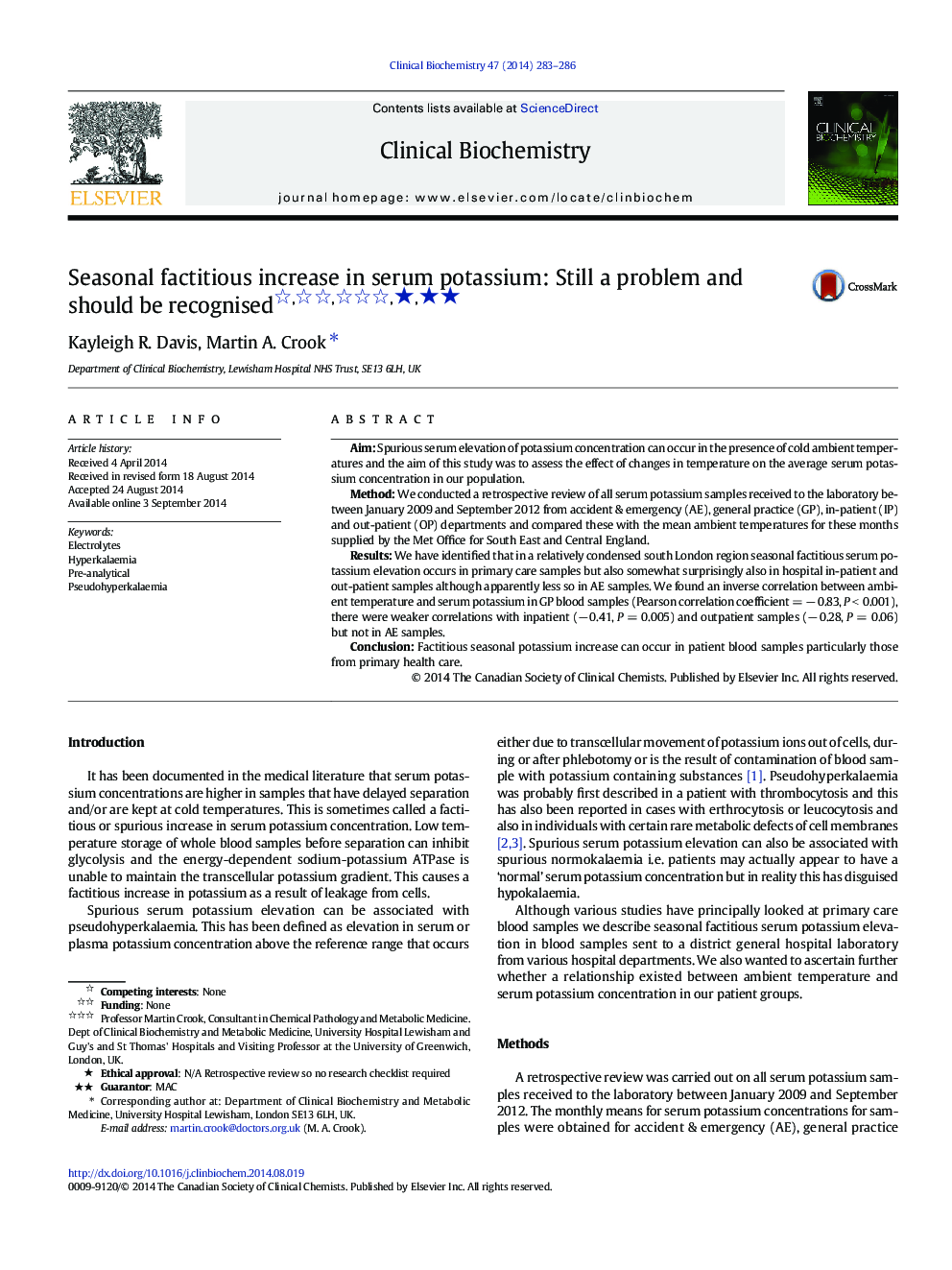| Article ID | Journal | Published Year | Pages | File Type |
|---|---|---|---|---|
| 1968918 | Clinical Biochemistry | 2014 | 4 Pages |
•Cold ambient temperature can cause spurious elevation of serum potassium.•Patient samples most susceptible to this are those from primary health care.•Spurious elevation of serum potassium also occurs in samples from hospital departments.•Laboratories should be aware of spurious or factitious elevation of serum potassium.
AimSpurious serum elevation of potassium concentration can occur in the presence of cold ambient temperatures and the aim of this study was to assess the effect of changes in temperature on the average serum potassium concentration in our population.MethodWe conducted a retrospective review of all serum potassium samples received to the laboratory between January 2009 and September 2012 from accident & emergency (AE), general practice (GP), in-patient (IP) and out-patient (OP) departments and compared these with the mean ambient temperatures for these months supplied by the Met Office for South East and Central England.ResultsWe have identified that in a relatively condensed south London region seasonal factitious serum potassium elevation occurs in primary care samples but also somewhat surprisingly also in hospital in-patient and out-patient samples although apparently less so in AE samples. We found an inverse correlation between ambient temperature and serum potassium in GP blood samples (Pearson correlation coefficient = − 0.83, P < 0.001), there were weaker correlations with inpatient (− 0.41, P = 0.005) and outpatient samples (− 0.28, P = 0.06) but not in AE samples.ConclusionFactitious seasonal potassium increase can occur in patient blood samples particularly those from primary health care.
